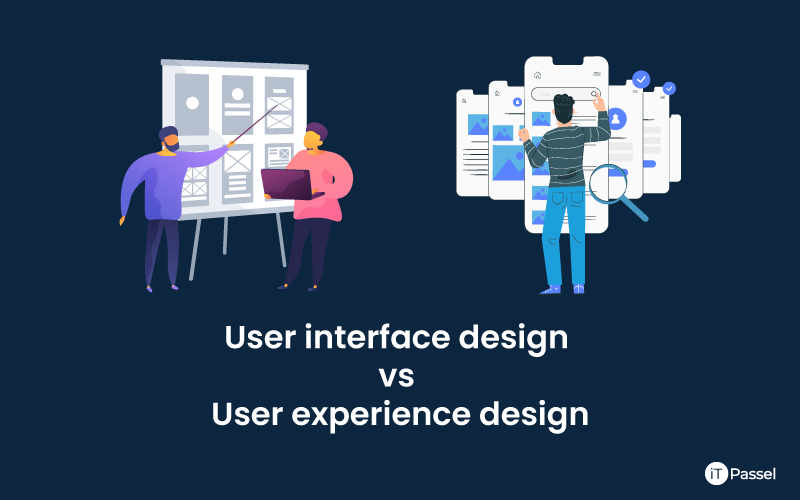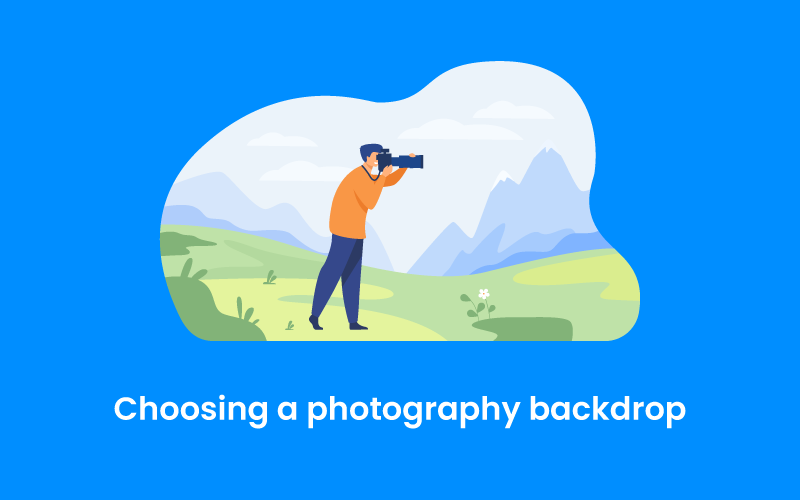We use cookies to make your experience better. To comply with the new e-Privacy directive, we need to ask for your consent to set the cookies. Learn more.
UI/UX: User interface design vs user experience design - UI vs UX

In web and app design, UI design and UX design are two of the most frequently misunderstood phrases. And it's understandable. They're often combined into a single phrase, UI/UX design, and on the surface, they appear to describe the same thing. It's often difficult to obtain accurate descriptions of the two that don't devolve into jargon. You'll have a good knowledge of what distinguishes them and how they relate to one another by the end of this article.
What is User Interface Design?
"UI" stands for "user interface" in UI design. An application's user interface is its graphical layout. It includes the buttons that users press, the text they read, the graphics, sliders, text entry boxes, and all other objects with which the user interacts. This comprises everything from the screen layout to the transitions and interface animations to each and every micro-interaction. Every graphic element, interaction, and animation must be created. As a result, UX designers are equally concerned with an application's user interface, which is why some people are confused about the two. UI designers, on the other hand, are in response of deciding how the user interface will look, whilst UX designers are in charge of defining how the user interface will function.
They determine the interface's structure and operation. How it's laid out and how the various components interact. In other words, they create the interface. The user will have a positive experience if it works smoothly and seems seamless. However, if navigation is difficult or unintuitive, the user experience will be poor. In addition, there is some iterative analysis involved in UX design. UX designers will sketch out wireframes of their interface interactions and solicit input from users. This will be incorporated into their designs. UX designers must have a comprehensive understanding of how people prefer to interact with their applications.
Objectives of user interface design
- How They Collaborate
- It is critical to conduct research.
- User Interface Design Research
- User Experience Design Research
- UI vs. UX: Two Distinctive Disciplines That Collaborate
As a result, a UX designer determines how the user interface functions, whereas a UI designer determines how the user interface appears. This is a very collaborative process, and the two design teams usually collaborate closely. The UI team is working on how all of these interface pieces will appear on screen while the UX team is working on the app's flow, how all of the buttons direct you through your tasks, and how the interface quickly delivers up the information users need.
Let's imagine it's decided at some point during the design process that more buttons should be added to a particular screen.
This will require a modification in the way the buttons are structured, as well as a change in their shape or size. The UX team would decide on the optimum layout for the buttons, while the UI teams would adjust their designs to meet the new layout. Constant communication and collaboration between UI and UX designers ensure that the final user interface looks as excellent as it possibly can while also performing efficiently and intuitively.
It is critical to conduct research
Both UI and UX designers must conduct research. Both professions value gathering as much useful information as possible to aid in the creation of effective designs, and they take a similar approach. Both will conduct user research. What they hope to get out of the apps that are being built. This type of research is frequently iterative, comprising usability sessions in which real users interact with scaled versions of certain functionality or aesthetic designs to see if the designers are on the right track. Each iteration incorporates feedback.
This method entails creating low-fidelity prototypes, such as wireframe renderings of interface elements, in order to assess a user's reaction to the functionality under test. Fast visual prototypes and A/B tests of multiple possible versions of the interface's appearance and feel to decide which one customers prefer can also be used. In all circumstances, research aids in the decision-making process for designers as they construct their contributions. The information that UI and UX designers are looking for, on the other hand, is rather different.
User Interface Design Research
UI designers must ensure that the visual language they use is appropriate for the type of program they're creating. They are attempting to anticipate user expectations. It's critical to research how other travel applications have been produced in the past if your team is working on one. Which ones were successful? Which ones didn't make the cut? There are design lessons to be learned from the previous work of others. People may prefer outlined symbols over bold shapes, according to research. People are familiar with and like using this visual shorthand. That lesson should be incorporated by UI designers. The specific aesthetic they chose is up to them, but designers who reject the basic "rules," or the need to comply with user expectations, do so at their peril. That isn't to argue that dangers should be avoided. Designers of user interfaces want their work to stand out and be remembered. However, this must be balanced against ensuring that users understand the purpose of the pieces you're displaying.
User Experience Design Research
User expectations are very important in UX design. All of the interactions and experiences consumers have had with every program they've used in their life have contributed to their expectations of how interfaces should work. If a UX designer isn't well-versed in these standards, they may mistakenly create an interface interaction that appears rational to them but violates widely held rules. Users dislike it when an interface performs in a way that they did not expect, and this can have a negative influence on their experience.
Most people, for example, are familiar with the concept of clicking twice on a file to open it and once to select it. This is an interface behavior that has existed for almost as long as graphical user interfaces have existed.
UI vs. UX: Two Distinctive Disciplines That Collaborate
Although UI and UX design need quite different skill sets, they are both critical to the success of the other. A gorgeous design can't redeem a clumsy, difficult-to-navigate interface, and a fantastic, perfectly-suited user experience can be ruined by a lousy visual interface design that makes using the app unpleasantly. To develop a good user interface/experience, both UI and UX designs must be beautifully executed and completely linked with pre-existing user expectations. And when all of the stars align, the effects can be spectacular.




